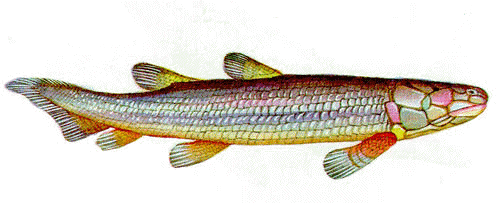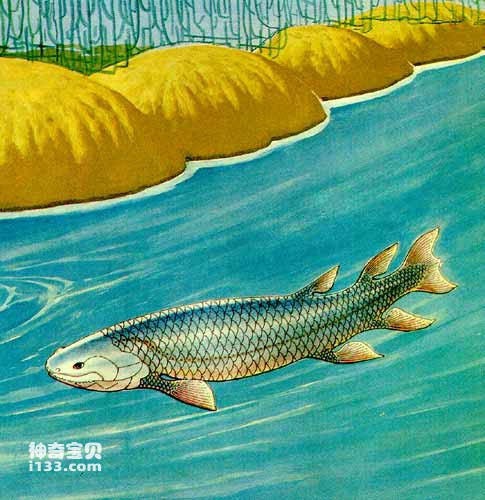The earliest representative of lobe-finned fish is the skeletal fish of the middle Devonian period. From it, we can actually see some "signs" of early amphibians.

bony fish
First of all, the skull and upper and lower jaws of Osteosaurus are completely bony, and the composition, position and shape of many bone fragments are similar to those of early amphibians.
Secondly, the teeth of the skeletal fish are "maze-shaped". In other words, when the cross-section of its teeth is observed under a microscope, it can be found that the enamel layer is very wrinkled, forming a maze-like pattern. Interestingly, early terrestrial amphibians also had this type of labyrinthine teeth.
The most significant thing is that the bone structure inside the fins of the skeletal fish is not only not as specialized as the lungfish, but the structure, position and shape of each bone block, and even the joints between the bone blocks are very similar to those of early amphibians. Similar.
Based on this, the lobe-finned fishes developed into two large systems, namely fan-finned fishes (suborder) including bony fishes and coelacanths (suborder).

True palm fin fish
Fan-finned fish are large carnivorous fish that were found from the Devonian to the Early Permian. They mostly lived in freshwater waters and are now extinct.
Among the fan-finned fishes, there is a kind of eupalaphin fish that lived in the Devonian period. They have more similarities with early amphibians. In addition to similarities in skulls, teeth, and even fins, they have a series of bony rings around the notochord, with small bony spikes between the rings, and each ring has a ridge that projects backward and upward. These structures are already very similar to those of early amphibian spines - the bony rings are equivalent to the intervertebral bodies, the bony spikes are equivalent to the vertebral bodies, and the protruding ridges are exactly the same as those on the amphibian spine. Therefore, some scientists believe that there is only a short step in the evolution from eupalomata to terrestrial vertebrates to climb onto land.
Coelacanths are a specialized group with a reduced number of skull fragments and teeth. They were more abundant in the Mesozoic Era, represented by giant fish and so on. Coelacanth fossils discovered in my country include Changxing fish and others.
animal tags: Coelacanth
We created this article in conjunction with AI technology, then made sure it was fact-checked and edited by a Animals Top editor.